Top 8 Best Revision Tips for Primary School Students
Top 8 Best Revision Tips for Primary School Students
Preparing for exams in primary school can be a challenging experience, not just for students, but for parents too. Whether your child is preparing for a weekly spelling test or a formal assessment aligned with standard exam formats, the way they revise can make a huge difference in their academic success. These primary school exam tips offer clear guidance during this crucial stage.
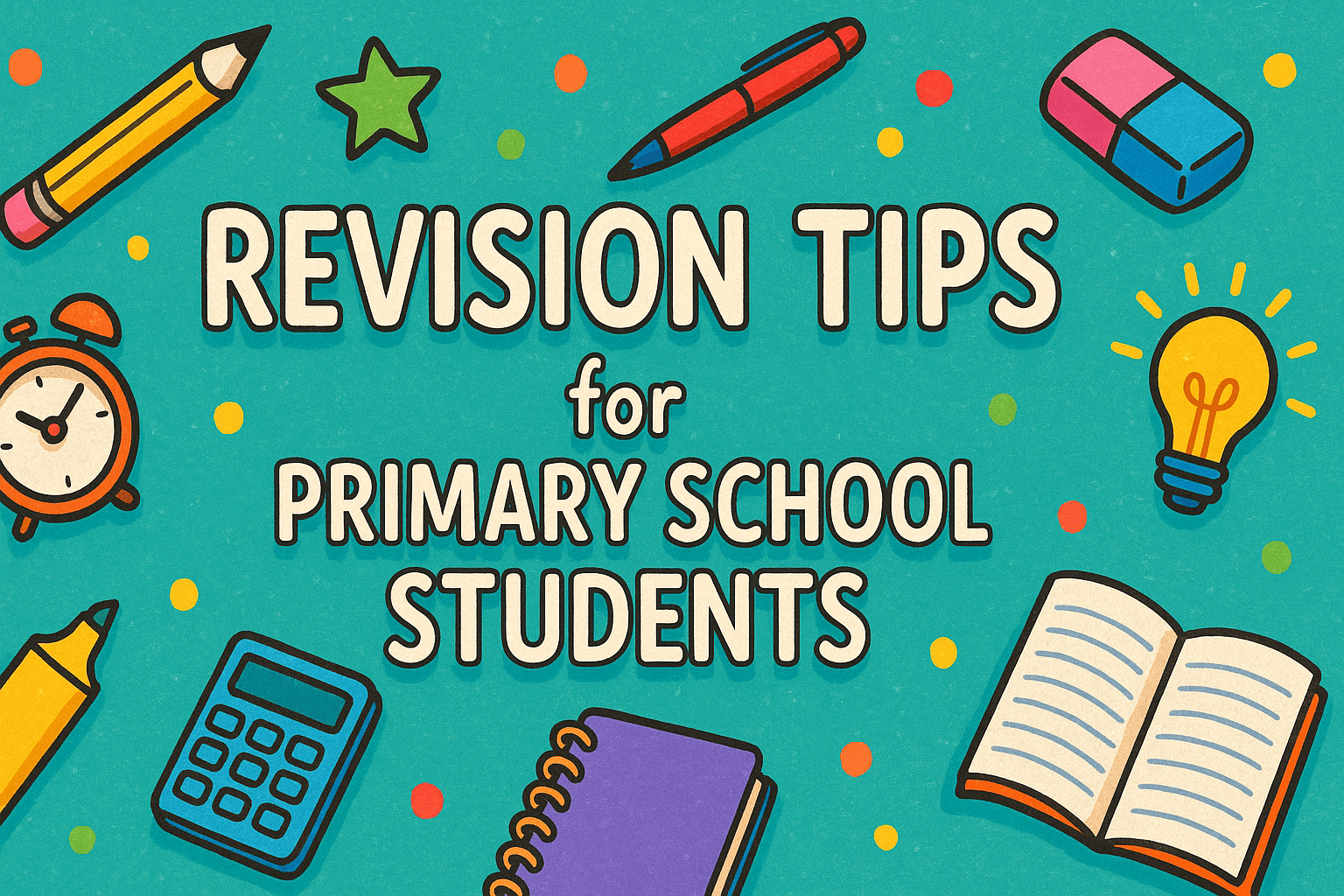
The good news? Revision doesn’t have to be stressful. With the right study routine, supportive environment, and well-planned revision strategies, even the youngest students can develop effective study habits and enter their next exam feeling confident. These are some of the most useful study tips for young learners, especially when focusing on exam preparation for primary students.
In this guide, we will share 8 of the most practical, research-backed, and age-appropriate primary school exam tips to help your child prepare in a way that’s not only productive but also engaging and manageable. These include the best revision strategies for kids and show how to revise effectively.
Active Recall: Strengthening Memory for Better Retention
Simply reading notes or highlighting text may feel productive, but it often leads to surface-level learning. Many children read without truly retaining the information. That’s why active recall, the practice of retrieving information from memory, is such an effective approach, especially when your child is preparing for an upcoming test. It’s one of the most effective primary school exam tips that enhances focus and understanding.
Instead of re-reading the same material, try asking your child direct questions about what they just learned. This method forces the brain to work harder, improving long-term retention and deeper understanding of key concepts. It's a valuable part of any study schedule, and it can be easily adapted to suit different learning styles. When included in exam preparation for primary students, it helps significantly in how to revise effectively for children and is among the best revision strategies for kids.
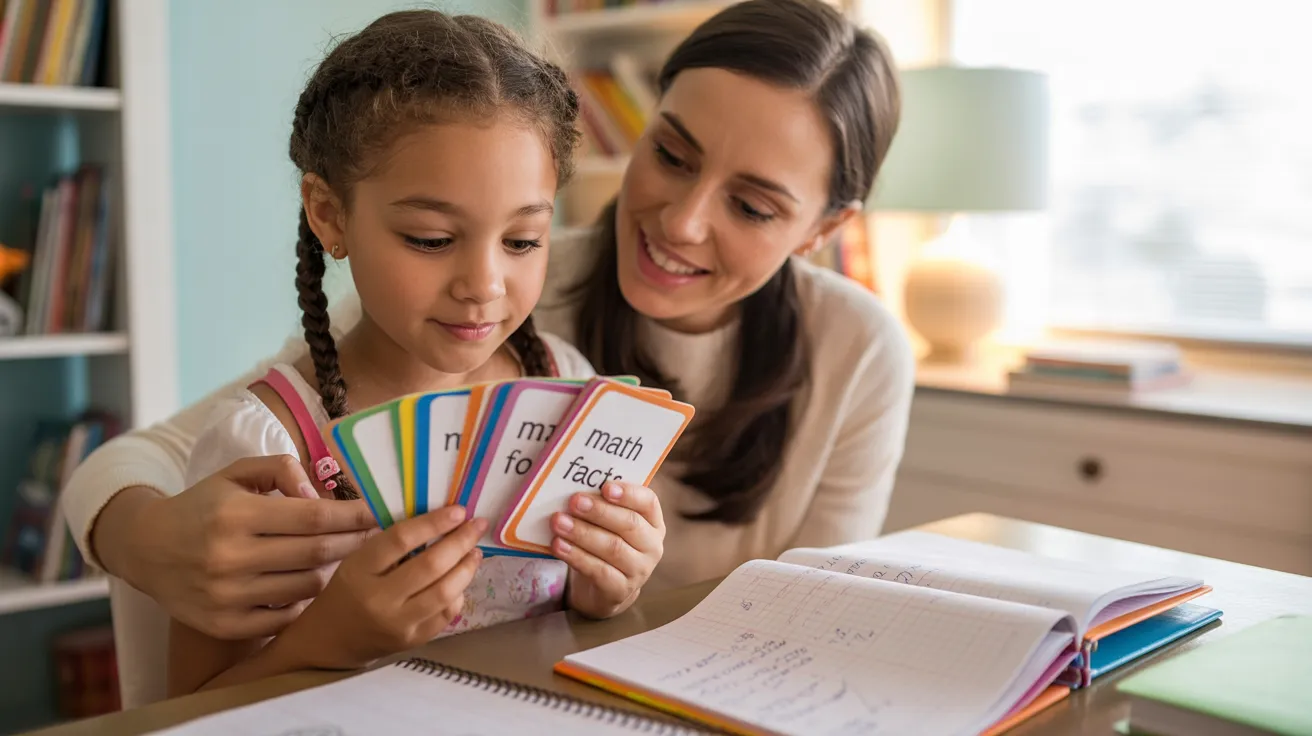
Here are a few ways to bring active recall into your child’s daily study routine:
Ask specific questions like, “Can you explain what we just read in your own words?”
Use flashcards or simple Q&A games during or after each study session.
Introduce “teach-back” moments where your child becomes the teacher and explains the topic to you.
Encourage drawing or creating visual summaries, especially for subjects like science or geography.
Build a quick review into the next day’s study session, asking for a summary or fact recall from the previous day.
This kind of study method works best when combined with other tools like past papers, review quizzes, and short, focused sessions spaced out over time. It builds self-discipline and helps your child feel more in control of their learning, making it one of the most reliable primary school exam tips.
With consistent use, you will likely notice your child becoming more confident in explaining things clearly and recalling facts with ease. Active recall helps lay the foundation for stronger thinking, clearer communication, and a more organized approach to any exam preparation. It’s one of the simplest and most effective ways to truly support how your child prepares for success in the classroom.
Spaced Repetition: Avoid Cramming; Retain More
We all know that last-minute cramming rarely leads to real understanding. Instead, teaching your child to review material in small doses over time, known as spaced repetition, can make a huge difference in long-term learning and academic success. You can try this:
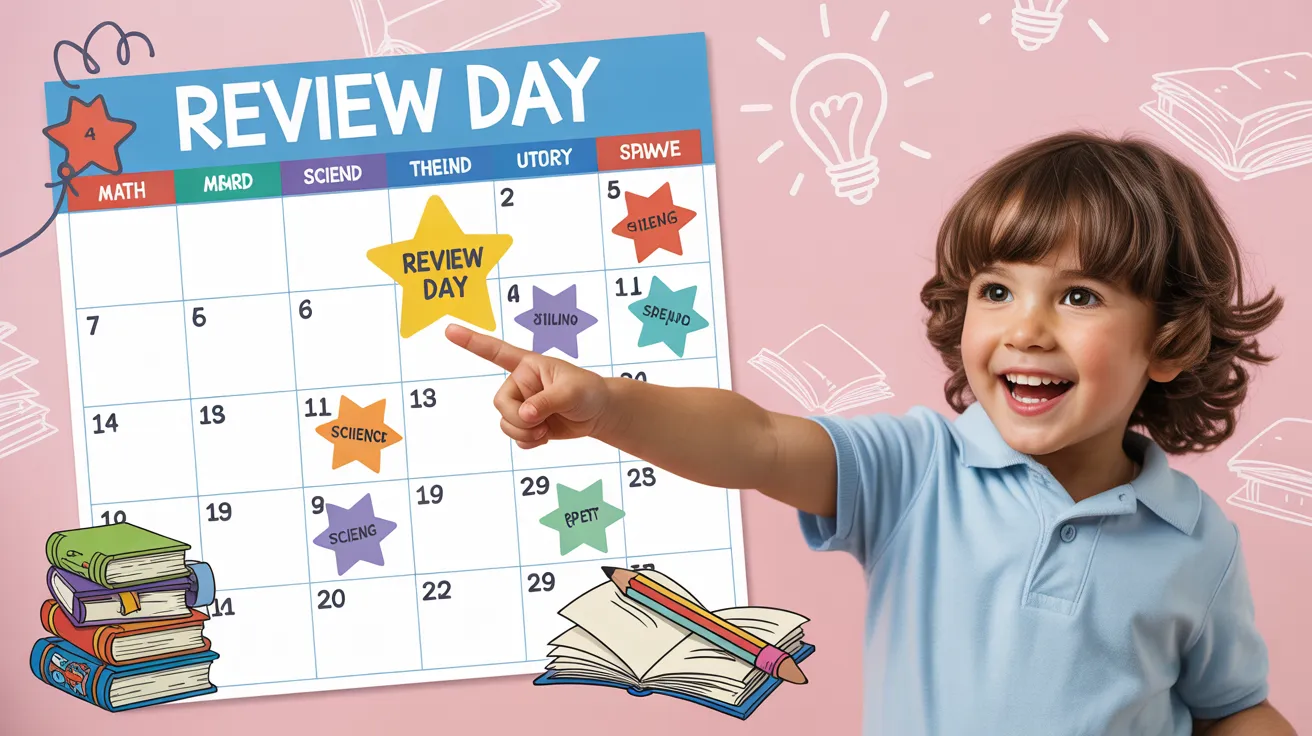
Break the study plan into smaller chunks across multiple days or weeks.
Create a revision calendar that revisits subjects or key concepts every few days.
Begin with more frequent reviews (e.g., every other morning), then gradually space them out.
Use an example or quick summary from the previous day to reinforce memory at the start of each study session.
Rotate between study methods (e.g., flashcards one day, quizzes the next) to engage different memory pathways.
Mix newer and older material in each session to ensure child’s success with both retention and recall.
Set aside five minutes for reflection: “What did I learn? What was tricky?” to improve self-awareness and exam preparations.
This method builds better memory and it teaches self-discipline and strengthens your child's success over time. Using spaced repetition can lead to deeper learning, increased focus, and greater confidence when tackling the next exam or new subjects.
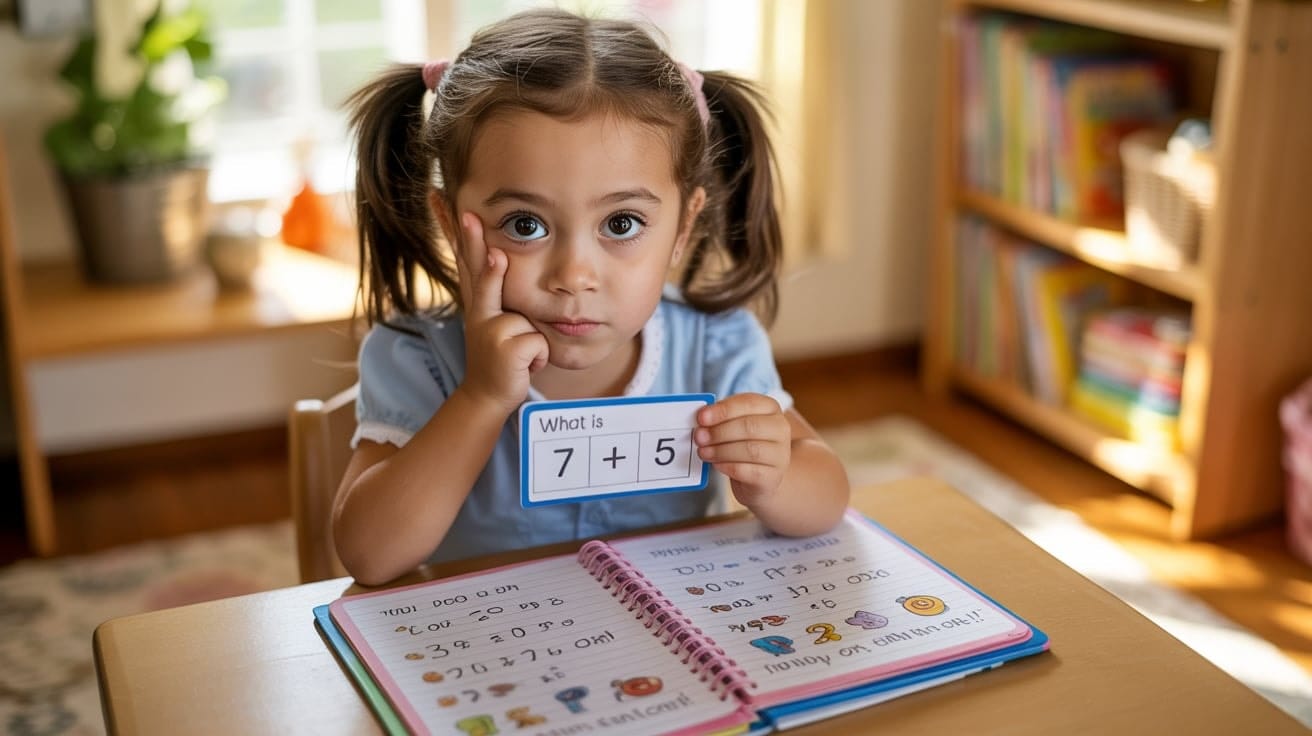
Spaced repetition also supports better time management, as it encourages short but consistent study sessions instead of overwhelming one-off cramming blocks. It’s an approach that allows your child to prepare smarter, not harder; reducing stress while improving performance across all subjects. Over time, it becomes a natural part of their effective study habits and aligns well with the best revision strategies for kids.
How Past Exam Papers Help Primary School Students
Practicing with past papers does more than just prepare your child for the type of questions they will face; it gives them a hands-on understanding of exam format, structure, and expectations from different exam boards. Familiarity breeds confidence, and confidence reduces anxiety before a big test. Here is why past papers are useful:
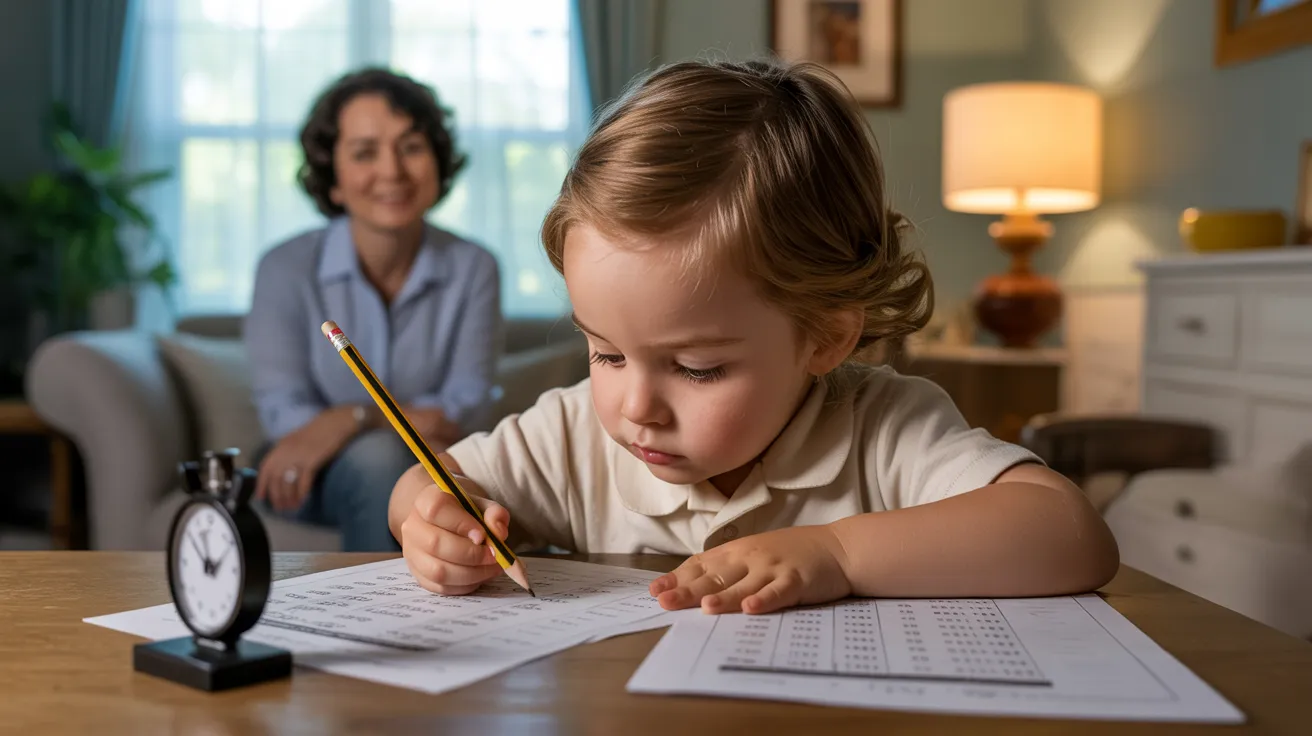
Simulate the upcoming exam environment to reduce stress and increase familiarity.
Encourage your child to complete papers under timed conditions to practice time management.
Mark answers together and identify areas that need improvement for review the following day.
Improve question interpretation and comprehension under realistic conditions.
Reinforce key concepts learned during regular study sessions through applied understanding.
Track progress over time and set achievable goals that support your child’s success.
This technique boosts knowledge retention, builds self-discipline, and introduces effective study methods that make a real impact. Using past papers regularly can help students apply their understanding under pressure, an essential part of becoming truly exam-ready.
Practicing under test-like conditions trains the brain to perform under pressure. This makes knowledge retrieval smoother during the real exam. When paired with regular study sessions and feedback, past papers help children approach assessments with calm, clarity, and a deeper understanding of what's expected, boosting their confidence and improving overall exam preparations.
Summarising and Mind-mapping for Quick Revision
Some children learn best through visuals and creative activities. That’s where mind maps, diagrams, and summaries come in handy especially for subjects like science, history, or grammar. Here is how you can use them effectively:
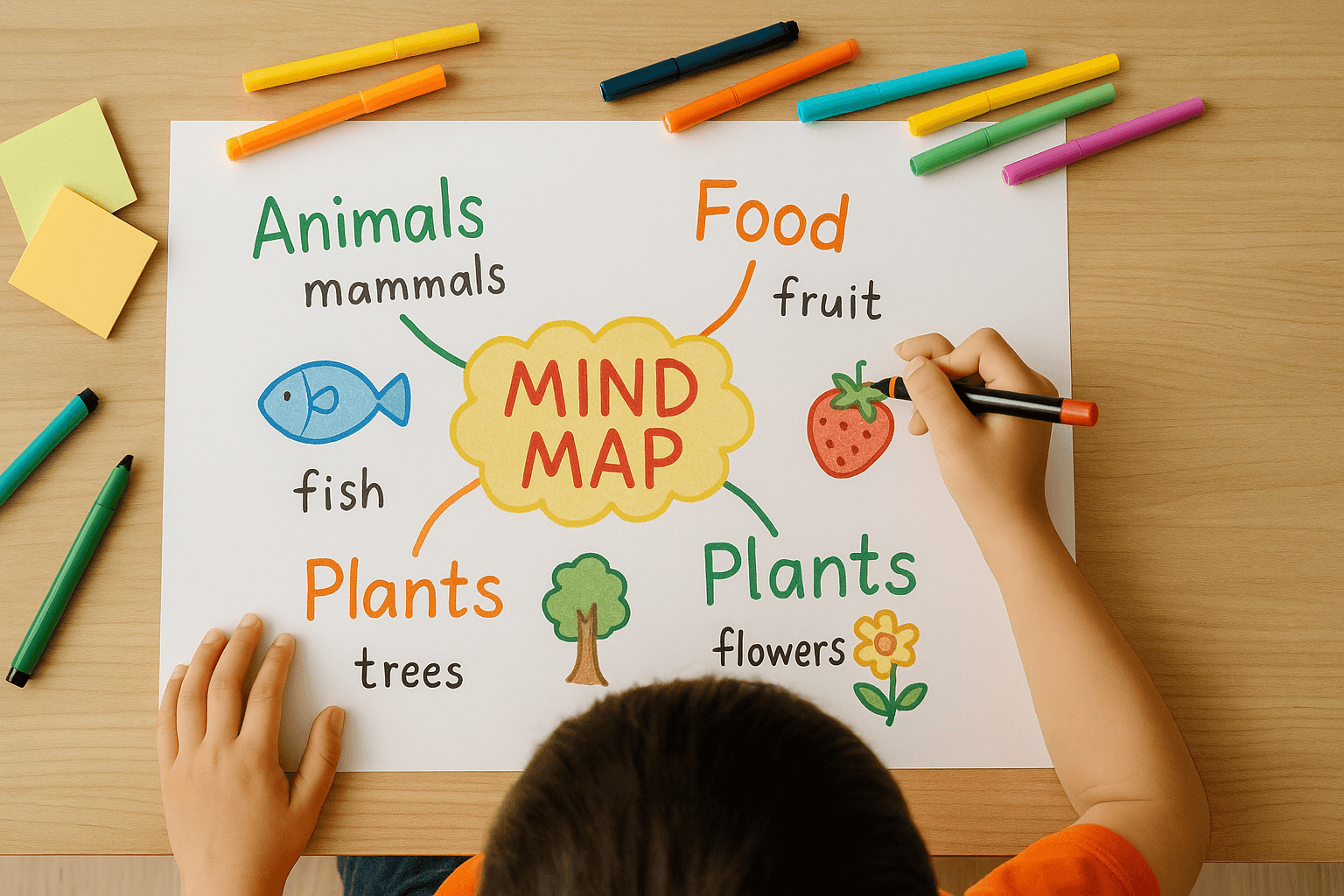
Ask your child to create one-page summaries using keywords, arrows, and drawings.
Use color coding or stickers to highlight important information.
Let them teach a topic back to you using their mind map or summary sheet.
This kind of active learning makes studying interactive, helping students internalise and explain content, key signs of understanding, not just memorising.
These techniques also encourage creativity and independent thinking. When children design their own visuals, they feel a sense of ownership over their learning. It’s a simple yet powerful way to boost engagement and make revision feel less like a chore. These are some of the best revision strategies for kids, especially when thinking about how to revise effectively for children.
Creating a Distraction-Free Study Environment
Many children think they are studying when they are just re-reading notes or highlighting text, but that rarely helps information stick. One of the best ways to actually remember what they’ve learned is by using active recall. It’s simple: instead of looking at notes, they try to remember things from memory. This technique works because it pushes the brain to do a little more work, which leads to stronger understanding and better long-term memory.
It’s especially helpful when your child is engaged in exam preparation for primary students and needs to be able to remember key concepts under pressure. These primary school exam tips are essential for building strong learning habits. Here are some easy ways to use active recall during a regular study session:

After studying a topic, ask your child questions and have them answer without checking their notes.
Use flashcards, quiz games, or simple question-and-answer chats.
Let them explain a topic back to you; teaching someone else is one of the best ways to learn.
Encourage them to draw a quick diagram or summary from memory, especially for subjects like history or science.
At the start of the next study session, ask them to recall what they learned the day before.
Adding these moments into your study schedule doesn’t take much time but can make a huge difference. It helps children see what they really know and what needs more practice without any pressure. Plus, it builds self-discipline and gives them a real sense of progress.
Over time, you will probably notice that your child feels more prepared and confident when facing tests. They will be able to explain topics clearly, remember facts faster, and stay calm under pressure. Active recall turns passive reviewing into real learning and it’s a great way to support your child’s success at school, especially during exam preparation for primary students.

Joining Study Groups for Collaborative Learning
Some students thrive when they learn with peers. Study groups can promote active discussion, explanation, and healthy motivation through teamwork. What makes study groups effective:

Small groups (3–5 children) with similar learning styles or revision topics.
Structured activities like group quizzes, peer-teaching, or board games.
Supervised or lightly guided by a teacher or parent for structure.
When kids explain ideas to each other, it helps the one doing the teaching, too. Putting concepts into their own words deepens their understanding and gives them a chance to hear different perspectives. It also builds confidence in a way that quiet, solo study often doesn’t.
But the benefits go beyond learning. Studying with friends makes revision feel lighter and more enjoyable. In a familiar group, children tend to relax, laugh, and stay curious. That kind of energy creates a safe space, one where even the quieter students feel comfortable asking questions, trying new things, or admitting when they are stuck. With a bit of structure, study groups can become a space where growth and encouragement go hand in hand.
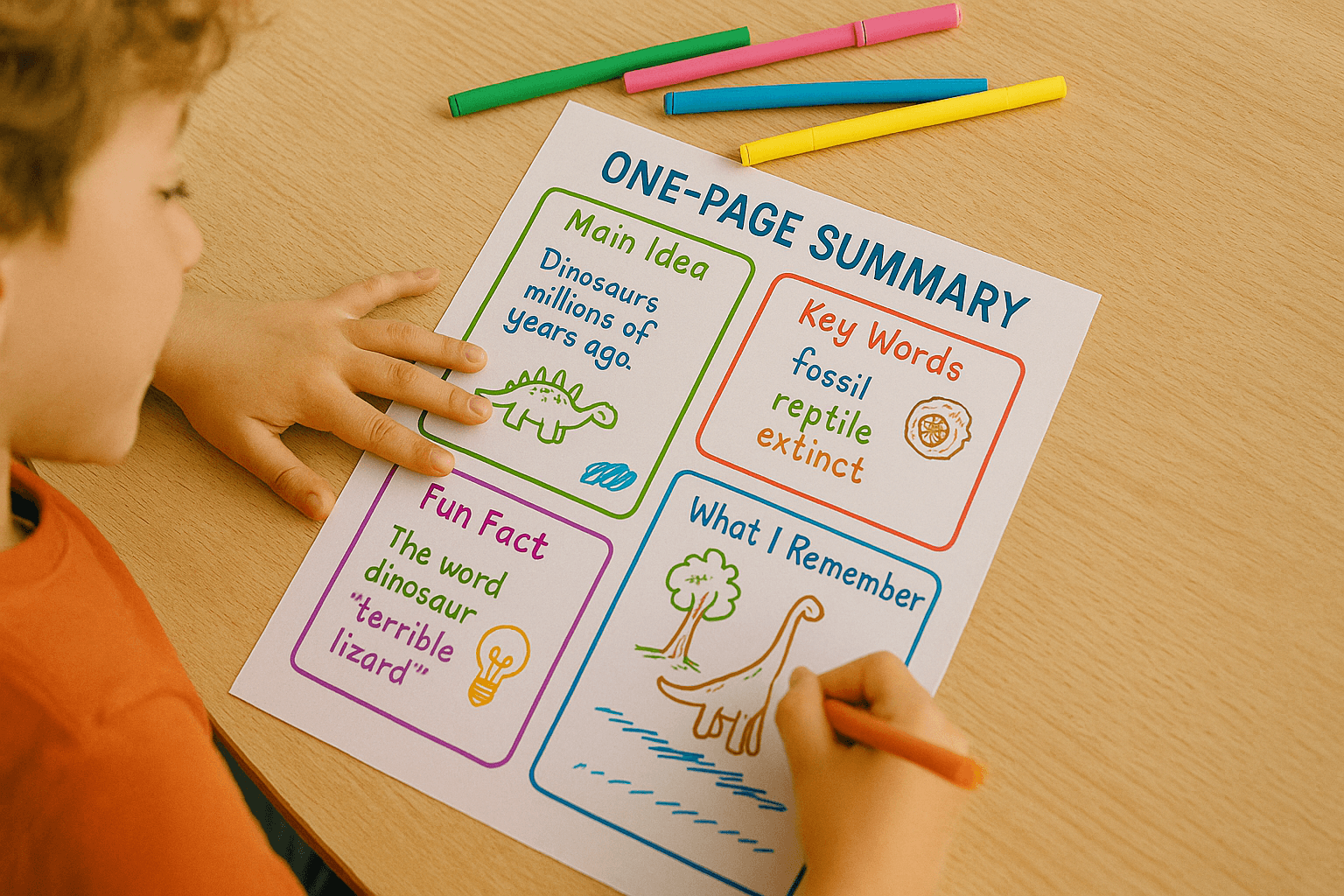
Using AI-powered Tools for Personalised Learning Style
Today’s digital tools offer more than just games; they deliver tailored learning experiences based on your child’s strengths, weaknesses, and study habits. How AI tools can support exam prep:
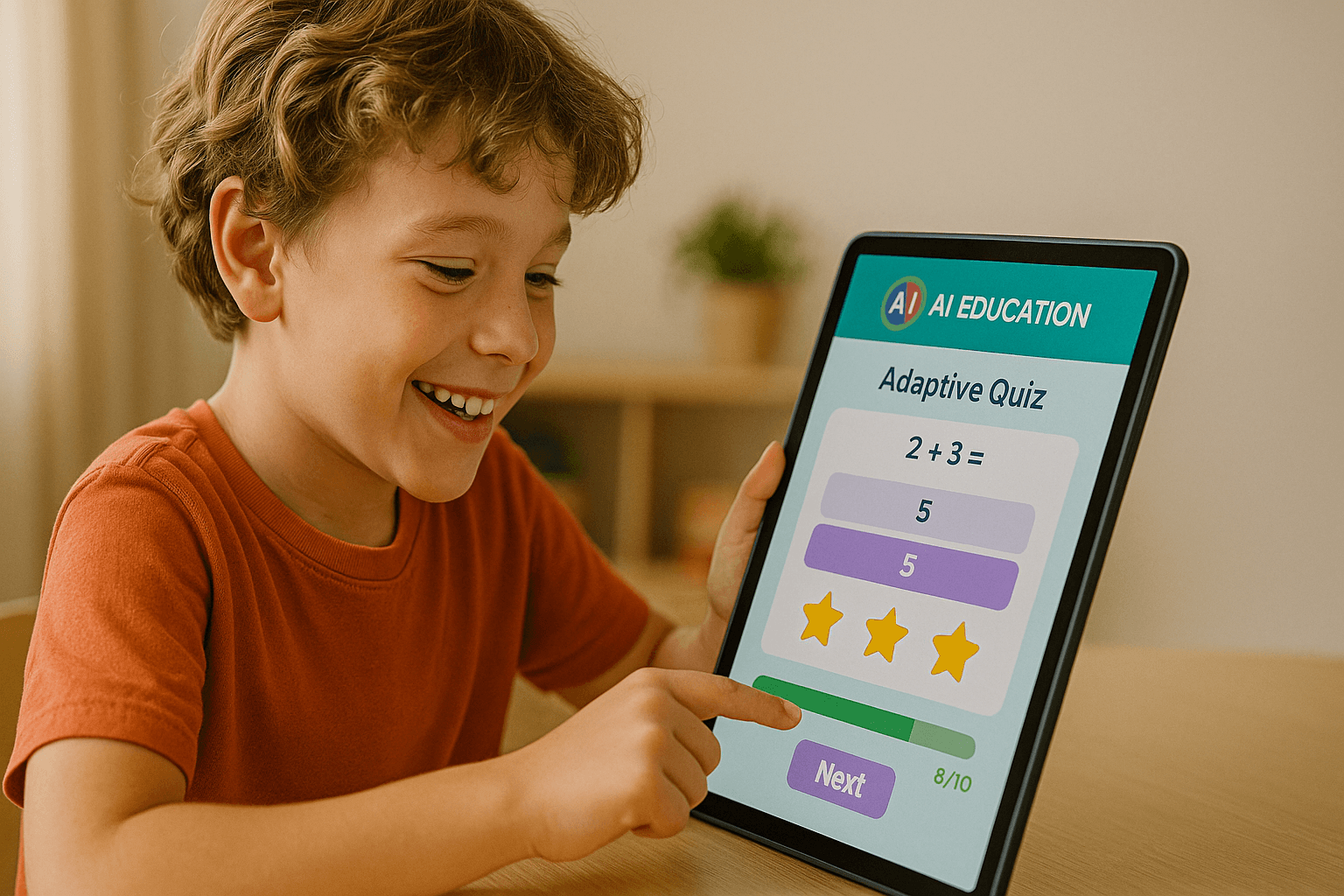
Apps that adjust questions in real-time based on the child’s performance.
Instant feedback on practice questions, helps identify areas for improvement.
Fun gamification that turns revision into a reward-based challenge.
For parents with busy schedules, digital tools can be a huge help during exam preparations. They adapt to your child’s learning style, adjust to their pace, and highlight key concepts based on completed practice questions. This kind of flexible study method keeps students engaged and allows for independent learning without constant supervision. It’s a smart, time-saving way to make revision more effective for both children and parents.

Taking Care of Well-being During Exams
Even the most thorough revision plan will fail if your child is overtired, anxious, or burned out. Healthy habits are essential to balancing focus and emotional well-being. Encourage a healthy study-life balance:
Make sure your child gets enough rest and keeps a regular sleep routine.
Promote nutritious meals and physical activity to boost concentration and motivation.
Talk about feelings related to exams and share calming techniques like deep breathing or music.
Remind your child: Exams matter, but their well-being matters more.
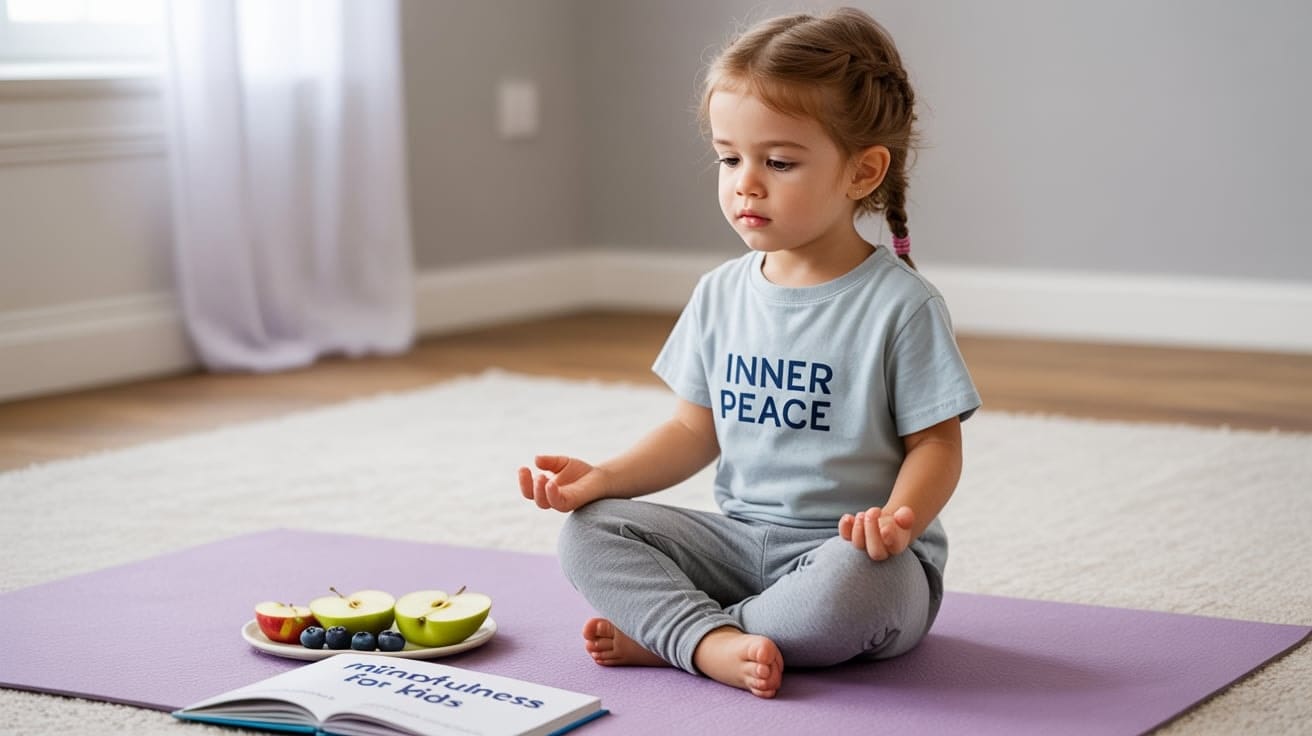
Conclusion
Getting ready for exams doesn’t have to be a stressful rush. When children start with a clear and steady study schedule, it gives them space to learn at their own pace and build confidence along the way. What really helps is keeping things simple—reviewing a little each day, asking questions, and going back over what didn’t stick the first time.
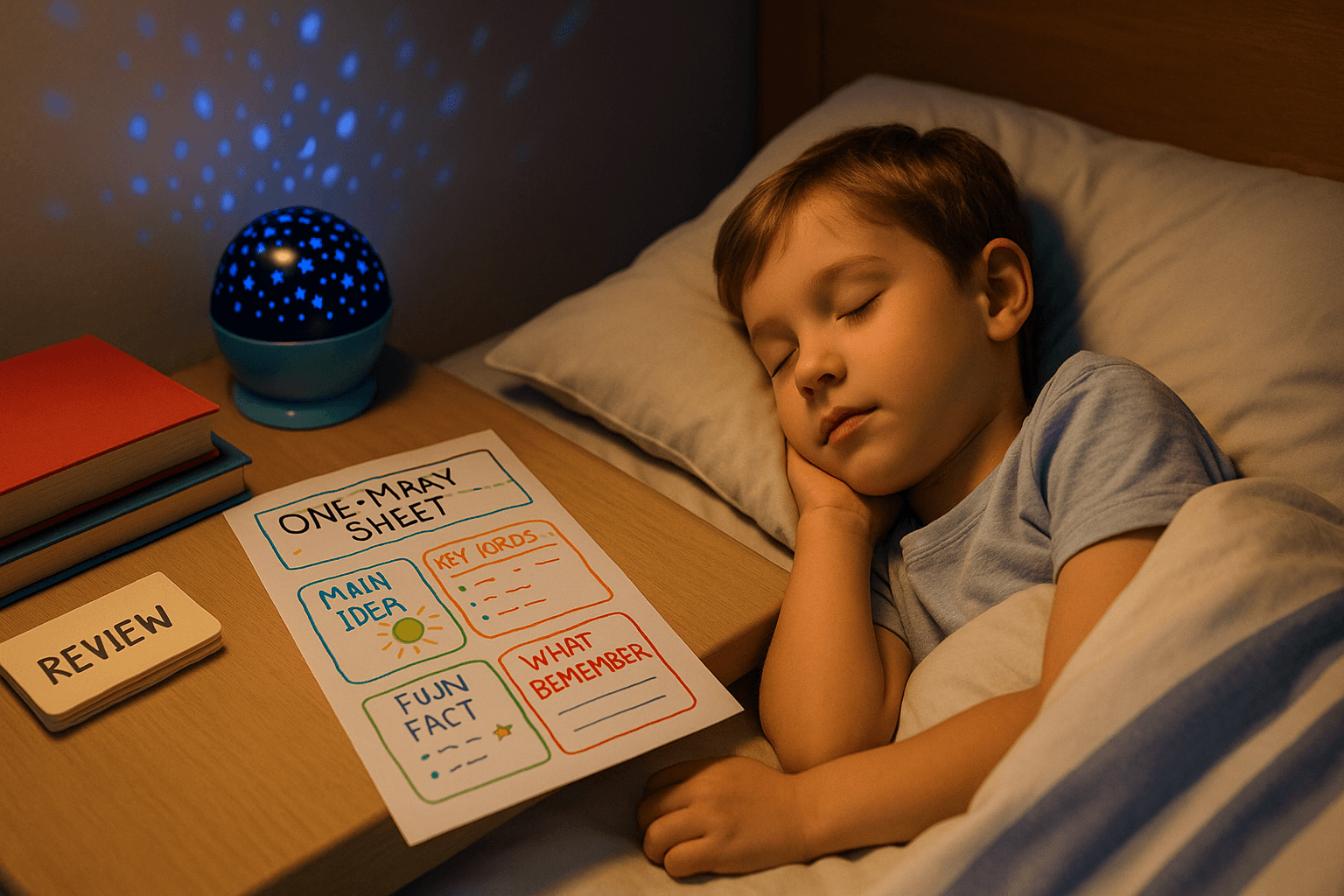
Try short, focused study sessions, followed by breaks to maintain concentration. Use tools like visual aids, mind maps, and note taking to strengthen memory and aid understanding of key concepts across all subjects. A consistent study routine will allow students to identify areas of weakness well before the upcoming exam, helping reduce stress and build confidence. These are some of the best revision strategies for kids, and they support how to revise effectively for children in ways that are both practical and manageable.
Over time, these small habits can make a big difference. You will probably notice your child feeling more in control, less anxious, and even proud of what they have managed to learn. That kind of steady progress is what turns revision into something more than just test prep, it becomes a part of how they grow as a learner. And in the end, that matters just as much as any exam result.
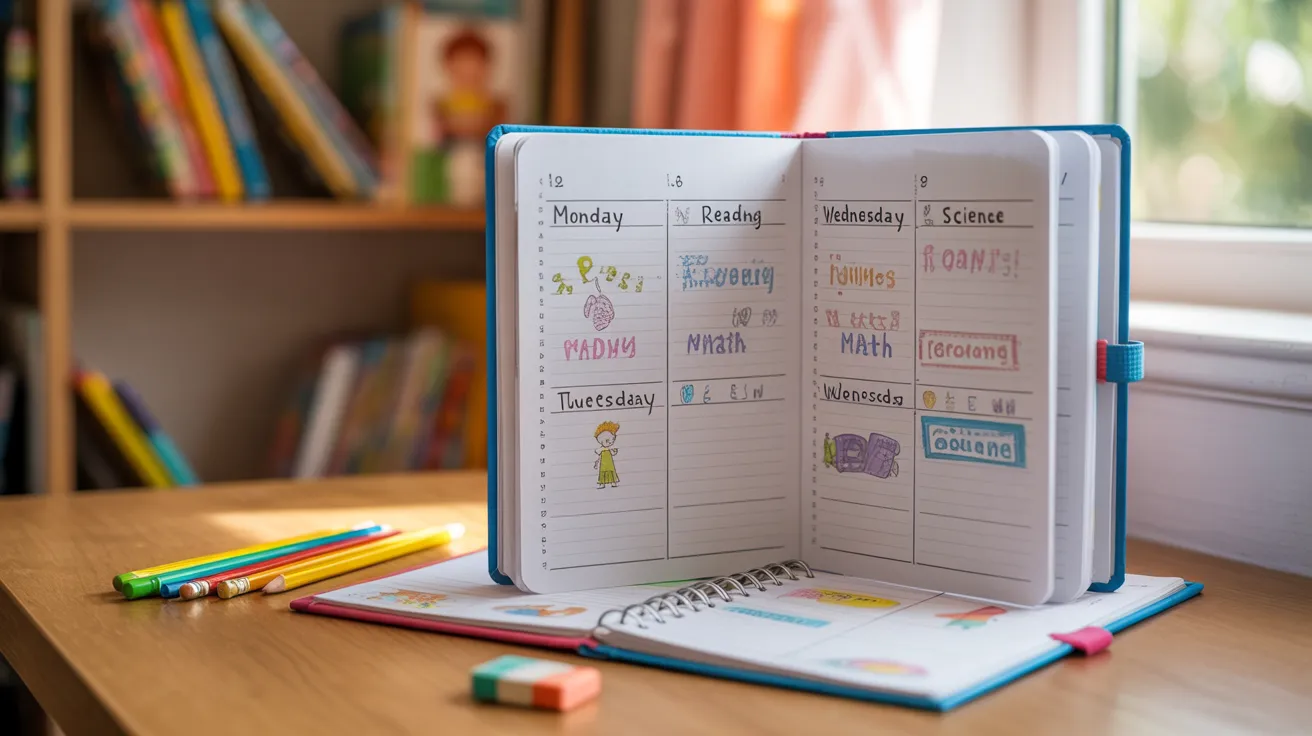
Revision Tips – FAQs
What is the best way to revise for primary school exams?
The most effective revision includes active learning techniques like active recall, spaced repetition, and using past papers to simulate the exam format. Combining these with a clear study plan, visual aids, and a calm study area gives your child the best chance of academic success. It’s also helpful to build a regular study routine that includes short, focused sessions, breaks for rest, and activities that support understanding of key concepts. Encourage your child to explain topics in their own words, as this strengthens memory and improves test preparation across all subjects.
How does active recall help primary students during revision?
Active recall strengthens memory by encouraging the brain to retrieve answers from memory, not notes. It helps your child deeply process key concepts, leading to better retention and recall in the exam itself. This technique also improves understanding during each study session, making effective revision more engaging. Over time, students gain more confidence in their knowledge, setting the stage for stronger academic success.
Are mind maps useful for younger students?
Absolutely! Mind maps are a fantastic way to summarise important information visually. They help kids organise ideas, connect topics, and remember more through colour, layout, and drawing—ideal for creative learning styles. This study method makes it easier to break down key concepts into manageable parts, improving understanding and long-term memory. Mind maps also turn revision into a fun, hands-on activity that younger learners enjoy.
What are the benefits of a distraction-free study space?
A clean, quiet space boosts focus and productivity. When your child studies in the same comfortable environment, their brain associates it with learning, helping them retain more and stay calm during revision. A well-organised study area improves concentration, supports more effective study, and reduces distractions during key study sessions. Over time, this routine builds consistency and contributes to better academic success by making learning more purposeful and less stressful.
How important is well-being during revision and exams?
Well-being is crucial. Healthy habits like regular rest, physical movement, and balanced meals improve memory and emotional stability. Supporting your child’s mindset during exam season leads to better performance and a positive attitude toward exams. Managing stress through routines, sleep, and encouragement helps them approach exam preparations with confidence, leading to stronger focus and long-term academic success.
How early should primary students start revising before tests?
Ideally, revision should begin a few weeks before the upcoming exam. Short, spaced-out sessions following a consistent study schedule allow children to absorb material without stress. This beats last-minute cramming every time. Starting early also gives your child time to understand the exam format, identify weak areas, and develop a steady study routine. Early preparation supports more effective revision, reduces anxiety, and helps your child prepare with greater focus and confidence—key ingredients for long-term academic success.
What is the 1/2/3 method for studying?
The 1/2/3 method is a simple study strategy that breaks revision into manageable steps. Spend 1 hour learning key concepts, 2 hours doing practice questions, and 3 hours reviewing with active learning techniques like mind maps or flashcards. This balanced study method is ideal for how to revise effectively for children, supporting stronger understanding, time management, and leads to more effective revision for academic success.
How to pass exams with top grades in primary school?
To achieve top grades, start early with a clear study plan and consistent study routine. Use active learning methods like active recall, spaced repetition, and past papers to reinforce key concepts. Create a quiet, organised study area, manage time wisely, and maintain good sleep and nutrition habits. Confidence, preparation, and focus - these primary school exam tips form lead to academic success.